One of my many cockamamie jobs was once selling roses on the streets of New Orleans in the 1970s. I had a little cart on the corner of Iberville and Bourbon Street where I sold bouquets of ludicrously priced posies to the inebriated. In homage to Tennessee Williams I painted “Desire” on the front so I had “a pushcart named Desire.” Then I just stood there and watched all the hookers, hustlers, drunks and derelicts stream by all night.
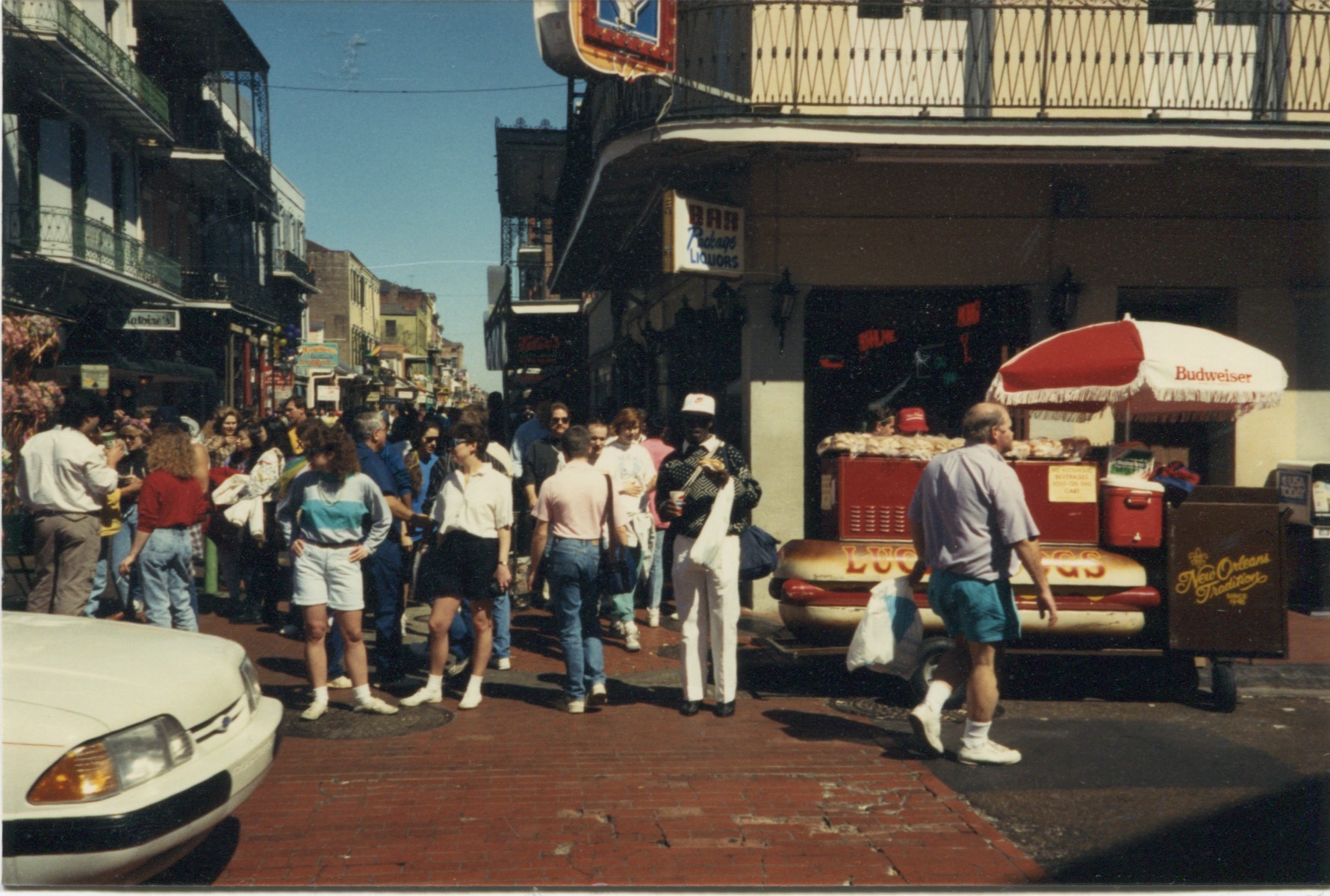
Parked next to me was the “Lucky Dog” man, who was grossly obese and had a large cart in the shape of a hot dog. He never once spoke to me for the first few months and always looked surly and unfriendly when I cheerily acknowledged him. He was a master of the layered look- three sweaters, several socks on his hands and a few scarfs wrapped around him. There we stood side-by-side, night after night, as the New Orleans nightlife careened by. Then out of the blue, one night, he piped up and said to me: “I was an extra in Airport.” I was so shocked I jumped back. What brought that on? “I played one of the screaming passengers on the plane…” he added. “You were an extra?” I asked. “Yeah, for a few years at Universal Studios.” With that, he settled back into his funk and never spoke another word to me. A year later I rented Airport, and, sure enough, during one scene when the plane lurches forward, there was the hot dog man way towards the back, flailing his arms in mock horror.
Being an extra really is a thankless job- you’re basically just background filler, walking by on the sidewalk, sitting in a restaurant eating fake food and pretending to be engaged in conversation. The whole point is not to be noticed. It demands an ego-free agenda…and hours of standing around in holding pens or on cold street corners waiting for your cue. Almost no one ever emerges from an extra to star, though there have been exceptions. John Wayne and Clint Eastwood. Ben Affleck and Matt Damon. But for the most part you are supernumeraries.
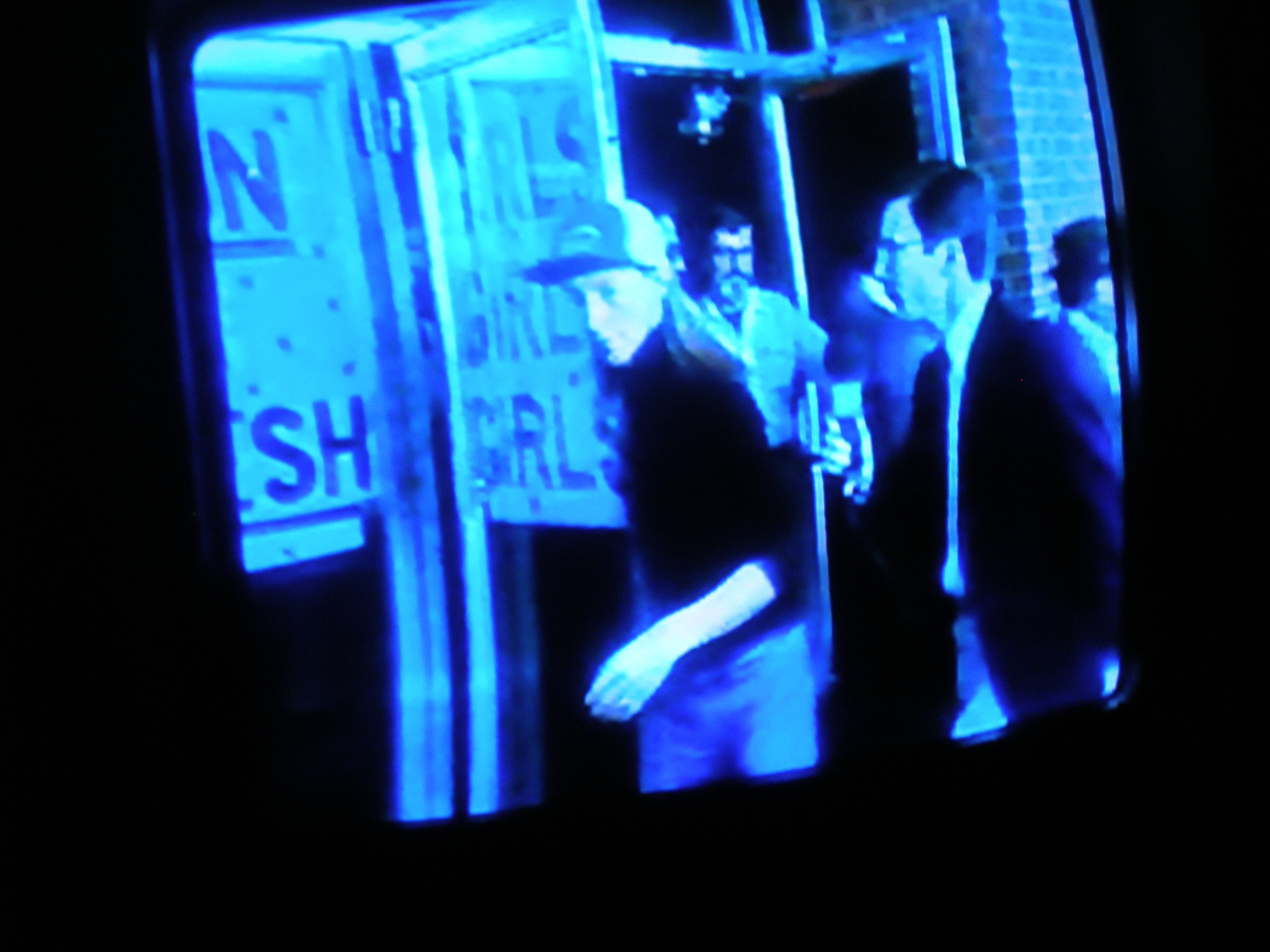
I’ve been an extra four times, and most were private jokes between the director and me. But it was weird to be forced to repeat actions for hours on end. The first time was during the shoot of John Waters’ Polyester. I had gone down to Baltimore to watch them film and to manage the Charles Theater. At the time, it was a bigger budget for John, and he’d gotten a real movie star this time, Tab Hunter, who, surprisingly, agreed to both do the film and make out with Divine. I remember meeting Tab for the first time and he was so incredibly charming and friendly and shook my hand so hard it hurt. He just had an infectious warmth about him and you could tell he just adored working with Divine. In the movie there was this moment when they show a porn theater (owned by Divine’s husband) screening My Burning Bush, and I was to appear in the scene as the last patron to leave the theater. I was supposed to pretend I was zipping up my fly as I scurried out the door in shame. But the whole thing was shot so quickly that I actually forgot I did it- until I saw myself on the screen at the premiere and slunk down in my seat.
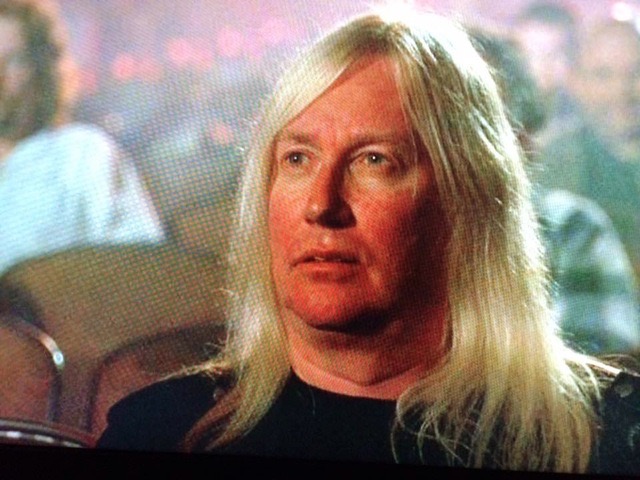
The second time was much more loony and memorable. It was when John Waters was shooting Cecil B. Demented about a group of film terrorists (led by Stephen Dorff) who kidnap a movie star (Melanie Griffith) and force her to be in their underground film. The scene in question was when the gang is chased into a porn theater and the masturbating audience recognizes Griffith as a movie star. John thought it would be funny to have a shot of a real film critic (me) whacking in the theater. So we (the extras) filed into this dank, seedy Baltimore porn palace, where we sat and pretended to jerk off for hours. The camera even dollied in on me for a close up and Stephen Dorff yelled, “Go, Dennis, Go!” when they got the shot, which really make me laugh. I got to talking in between takes to the people around me and learned that one guy was a Baltimore City detective, which totally shocked me. He even gave me his card. John Waters stood down front directing and commenting on the different masturbation techniques: “It’s like snowflakes- each one is different.” The experience left me strangely appreciative of the odd netherworld of an extra. After the film finally opened, no other film critic would sit near me during screenings. Who says there are no perks to being an extra?
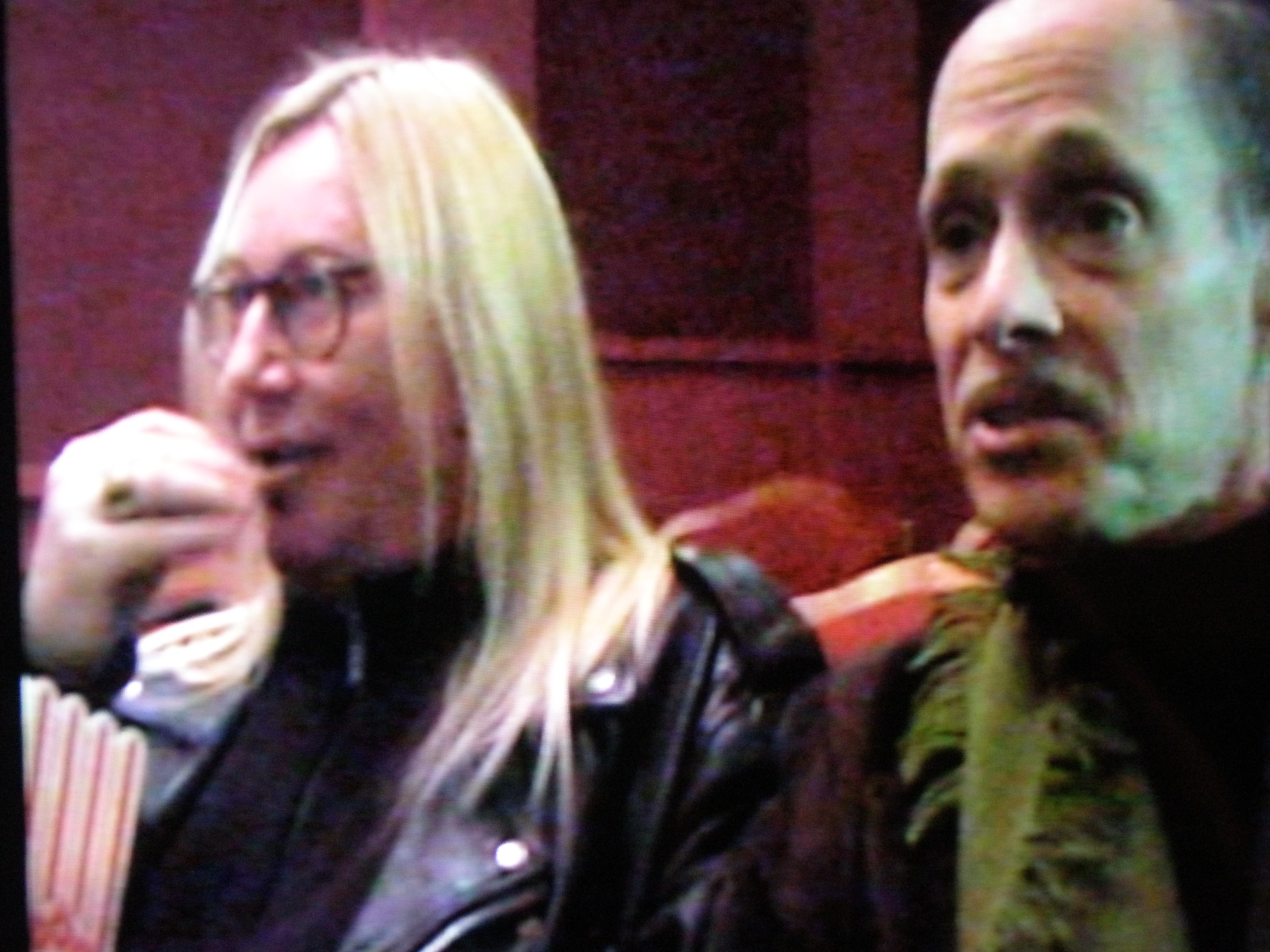
Exploitation director Doris Wishman has always been a hero of mine. From when I screened a 35mm print of her film Deadly Weapons for my birthday in Provincetown. In that movie, top-heavy burlesque queen Chesty Morgan plays a woman who gets revenge on the people who killed her husband by beating them to death with her breasts. A woman director was a rarity in exploitation films and her cinematic offerings ran the gamut from nudist films (Nude On The Moon), sexy thrillers (Bad Girls Go To Hell), and even sex-change documentaries (Let Me Die A Woman). I tracked her down where she was working at the Pink Pussycat sex boutique in Florida, and, after a few wary phone calls, she finally agreed that I could interview her over the phone for several nights. She was an utter delight. Funny, smart, self-depreciating, she told great stories about the trials and tribulations of low budget filmmaking. We even had a party for her in New York where she seemed genuinely delighted by all the interest, especially from young female film directors. Thanks to her biographer, Michael Bowen, she even returned to directing with Satan Was A Lady (2001) and was finishing her last film Each Time I Kill when she passed away at age 90. As usual, Doris’s movie had a good gimmick. In this one, a homely girl (Tiffany Paralta) gets a hold of a magic locket that gives her the attractive attributes of each woman she kills. Michael Bowen decided to go ahead and complete her final movie with the help of another exploitation great- Joseph W. Sarno (who directed Moonlighting Wives, Sin In The Suburbs and my favorite- Inga, with one of the best ad quotes: “I could have sworn the screen was smoking!”) So, John Waters and I were asked to come for a sequence shot in a movie house in the East Village. There were a lot of friends in the audience when we arrived, and Joe Sarno was conducting the crowd with sweet professionalism. I had to admit that, while sitting there during the shoot, I became quite moved by this last send-off for Doris. Wishman truly was a fearless pioneer, whose uniquely bizarre films are the exact essence of outsider art.
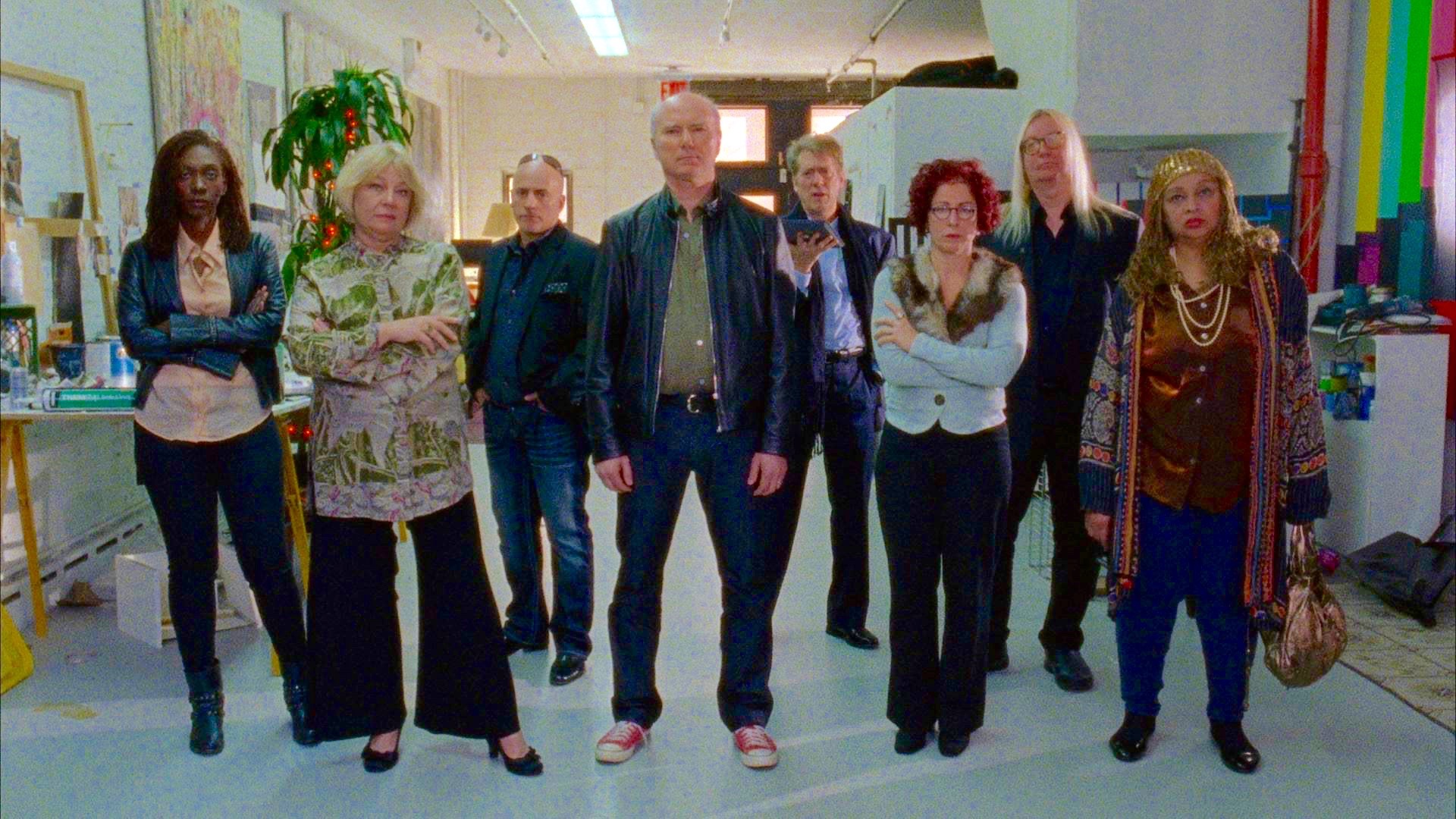
Frank Henenlotter is a terrific filmmaker- from Basket Case (1982), Brain Damage (1988), Frankenhooker (1990), Bad Biology (2008), his films are consistently original, sardonically witty and sublimely macabre. But he’s even a better friend. Together we celebrated our 60th birthday at a bar, with plenty of bizarre burlesque performances and surrounded by our eclectic friends. So when he began work on The Art Thieves, which was based on actor Anthony Sneed’s (Brain Damage) true story about a whacked-out road trip to New Orleans to appropriate an original Banksy, he asked if I’d be one of the “art pundits” who are brought in to assess the Banksy art work after it was successfully imported back to New York. The scene was shot in Brooklyn and it was enjoyable to watch Frank at work with his crew of talented and committed workers. And I was delighted to have Beverly Bonner, who has been in most of Henenlotter’s films since Basket Case, as one of the pundits. It just was a pleasure for me to be part of Frank’s project that the time just flew by. I didn’t have much to do except be imperious and dismissive, hardly a problem for a film critic.
But at least when somebody asks me if I’ve ever been in a movie I can say with complete conviction, “Sort of.”

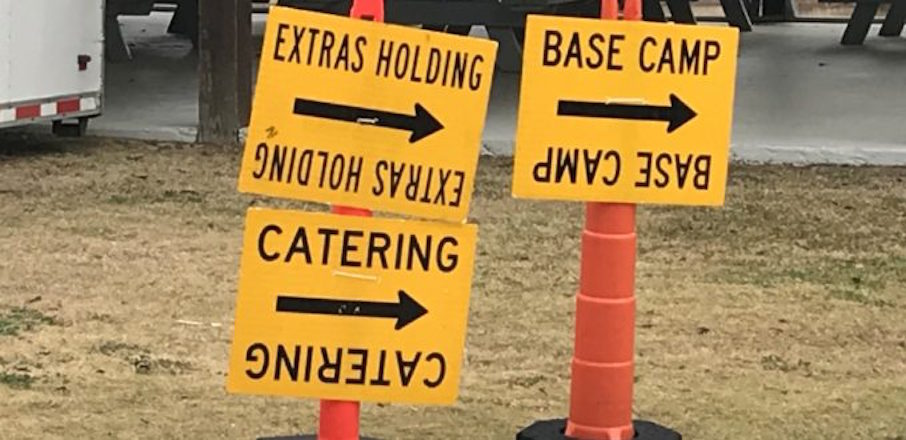
some really cool stuff.
Keep them coming, Dennis. We love your posts. Takes the edge off of living in this Bible Belt.
Xoxoxo,
Rob & David